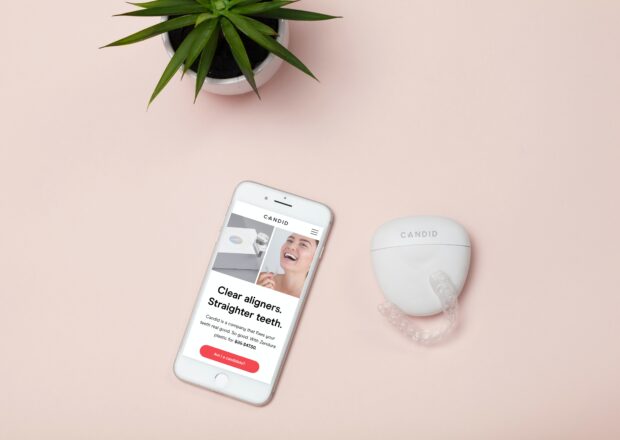Onboarding Design Agency Clients: 6 Vital Tips & Ideas
Have you ever wondered why 90% of all startups fail within the first year? Well, there are many reasons, but the most common reason of all is being overly complacent. Running a great agency, and offering a quality service is no longer enough to build a successful business. You need to give clients a delightful experience, and all that starts with a great, well-considered process for onboarding design agency clients.

A client onboarding process is not just about winning over the client or getting them to pay you more. It’s more about encouraging your client to feel comfortable with your agency and making them feel like family.
“People will forget what you said, people will forget what you did, but people will never forget how you made them feel,” Maya Angelou.
But, does your design agency really need a process for onboarding? Well, let’s find out.
Why You Need A Plan for Onboarding Design Agency Clients
You spend most of your time and money trying to attract new clients. Can you really afford to make a bad impression or even make a mistake during your initial relationship that drives a client away? You won’t have to worry about that if you have a great plan for onboarding design agency clients.
A client onboarding process is like taking someone you like on a first date. It’s all about leaving a great impression and paving the road for a better relationship. It should be all about impressing the other person. Listening to what they say and learning about the things they like.
Client onboarding is quite similar to that first date. That’s why you need to put together a properly organized onboarding process for your clients. It will not only help increase your success rates but it will also show your clients how systematic your agency really is.
If you plan on creating an onboarding process for your agency, here are a few tips for making sure it never fails.
1. Understand The Client’s Company Culture

It’s extremely important that you familiarize yourself with your client and their previous work before getting to an interview or presentation.
Each client that comes to you will have different expectations. Understanding their branding and marketing strategies is the key to properly organizing your campaign.
So, do extensive research and go through your client’s previous and existing projects to learn how they prefer to do work. Find out what makes them unique and separate them from their competition.
You especially need to understand their weaknesses, mistakes, and what they’re doing right now to fix them so that you can come up with an even better way to help your client. Then do you can plan your campaign to show off your expertise to your client.
It’s the first step to making a great first impression and building trust.
2. Meet In Person (or Face-To-Face) For Interviews

Today’s technology allows us to hold meetings with astronauts in the International Space Station and it is truly a wonder. But, when it comes to doing business, nothing beats a good old-fashioned face-to-face meeting.
While Skype calls and Google Hangout meetings can save you a ton of time and effort, those virtual meetings often lead to miscommunications and the client feeling disappointed or overwhelmed by all the details that you’re trying to pack into a 15-minute call.
According to HubSpot, “85% of businesses say they build stronger, more meaningful business relationships during in-person business meetings and conferences.”
A face-to-face meeting with strong social skills, body language, facial expressions, and quick thinking is far more effective when persuading your clients to follow your ideas.
3. Listen, Ask, And Learn

This may seem a bit obvious, but you need to ask questions from your clients, a lot! There’s no better way to learn your client’s expectations than asking the right questions. As SitePoint explain, it’s a great way to create brand identity and avoid getting into trouble.
Pay close attention to your client’s ideas, suggestions, and requirements. Then ask necessary questions to understand how you can approach the project in a way that you can address all those issues while also improving upon their ideas.
Creating a questionnaire to have your client or their staff answer is a great way to understand how their company works. This will make sure you don’t run into any problems with the client later into the project.
Here are a few basic questions you can ask your client:
- How would you explain your business and what you do?
- What type of consumer/customer problems do you solve?
- Can you name your main competitors and how you set yourself apart from them?
- What are your brand identity deliverables?
- Can you provide a profile for your ideal customer?
- What’s the main purpose/goal of this new project?
4. Set Clear Expectations

You need to set clear goals in your onboarding process to make sure your clients have clear and precise expectations about your services. You don’t want their expectations to be too high or too low — be clear about what they should expect when they’re working with you.
Learn your client’s needs for the project and create your campaign to fit their budget. Then you can include your goals clearly in your proposal or presentation to ensure that both you and your client are on the same page.
Also, remember to outline your campaign and the road ahead. Be open about how you work so that your client can feel safe knowing what type of results they can expect and when to expect it to be delivered.
5. Give Your Client The Center Of The Stage

There are two types of clients out there: those who come to you without any idea of how their project needs to be handled, and the others who come to you with a set of fixed ideas in their mind.
The first type of clients is the easiest to handle. They will allow you to do the things your way. Although, be very careful when dealing with the second type of clients.
If a client comes to you with specific ideas and requests in mind for their project, you should always give their ideas the center of your onboarding stage. Because an onboarding process should be able to make your client feel confident in your skills and capabilities.
Set aside your own design ideas and concepts for a moment and think of ways you can improve upon your client’s requests and delivering a result that meets their expectations. Show the clients how you can make the project look better than their competition and make them stand out in the crowd.
In short, make it all about your client and show them how well you understand their business.
6. Lay Groundwork For A Long-Term Relationship
Even if your client is looking to hire you for a small one-time project, treat them like you’ve been doing business with them for decades. Because every client that comes your way could bring you more business in the future if you treat them right.
This step also correlates with the previous point about holding face-to-face meetings, because as HubSpot points out “95% of businesses say face-to-face meetings are essential for long-term business relationships”.
Keep communicating with your clients, keep them updated on your progress, try to deliver better results earlier than expected, and, more importantly, be human.
“Our business is about technology, yes. But it’s also about operations and customer relationships,” – Michael Dell, founder and CEO of Dell Inc.
Providing support after the project completion is another brilliant way to establish a long-term relationship with your clients. Make a follow-up call once a while to check in on the client and see how well the project is doing.
Investing a small amount of your time to create a proper and repeatable onboarding plan could help keep you from making huge embarrassments and save you an enormous amount of time that goes into troubleshooting client issues that come later on.
Also, remember to make your team a part of your onboarding process and involve them in your onboarding plan so that they understand your client just as much as you do before you go ahead and kick off your campaign.
Onboarding design agency clients is the first and the most important step to understanding and building meaningful relationships with them. So, stay organized and do it right!




